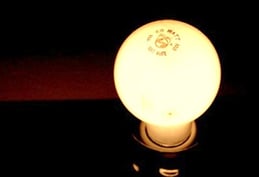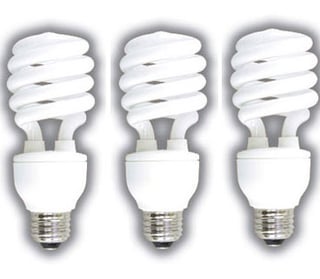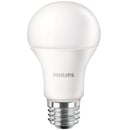What is Incandescent?

The incandescent light bulb or lamp is a source of electric light that works by incandescence, which is the emission of light caused by heating the filament. They are made in an extremely wide range of sizes, wattages, and voltages. On January 1st, 2014, by a law passed by Congress in 2007, these bulbs can no longer be manufactured in the U.S. because they don’t meet federal energy efficiency standards. Many other countries have adopted the same type of law as well due the fact that other types (CFL, LED) are much more energy efficient.
What is CFL?

Compact fluorescent lamps (CFL) are smaller versions of standard fluorescent lamps. They consume much less energy but provide light that is comparable to incandescent lights. Also, they can generally directly replace standard incandescent bulbs. Per the EPA, Compact Fluorescent Light Bulbs will help you save money by using less energy, reducing the amount of light bulb changes and most importantly lowering the greenhouse gas emissions which inevitably will lead to climate change. More information can be found one the EPA website. To find out more about costs, visit Home Depot.
What is LED?

LED (Light emitting diodes) is a semiconductor devise that emits light when and electronic current is passed through it. A study found that over their lifetime LEDs cost $95 to operate compared to CFLs that cost $159 and incandescent bulbs that cost $652. LED bulbs are available in options that either emits a warm, soft glow or a cool, bright glow depending on your preference. Some types perform well outdoors even in cold temperatures. Dimmable options are also available. LEDs (light emitting diodes) use 75-80% less energy than incandescent light bulbs and last 50,000 hours helping you save energy and money. For more information on cost, check out Lowe’s for LED light bulbs.
Which light bulb should you use? Until LED bulbs drop in price, most people will not realize savings if installed on all fixtures. Generally speaking, lights that will remain on for an extended period of time (kitchen, family, hallway and dining areas) will benefit the most as they consume electricity for longer periods of time. Closets, bathrooms, laundry rooms are areas where light is not constantly on and thus do not warrant energy efficient lighting. As light bulb prices drop, as they have in recent years, it may be more economical to replace all lights with energy efficient lighting. Your best bet is to choose an ENERGY STAR Certified Light Bulb. These use 70% to 90% less energy than traditional incandescent light bulbs and can last 10 to even 25 times longer. This can save you $30 to $80 over the lifetime of the light bulb. How many times do you change your light bulbs – you do the math.

